I think we made a good choice for today, both for where to go and with whom. It was just Cath and I on the full-day tour, with a company that uses its profits to support projects in the Lima slums, and yet its price was still cheaper than any of the other companies we looked at. We were picked up at 4:15 by our young guide and the driver, and commenced the 200+km drive down the coast to Pisco and beyond. As it got later and lighter I was awake enough to be in awe of the desolate countryside: barren dusty hills/sand dunes with the occasional town and large-scale caged egg farm. I hadn’t fully appreciated until now what a desert is the area around Lima, and the Paracas National Park — of which more in the next post — acknowledges this.
Our first activity involved a bit of a wait in the tourist-focused beach-front street in the town of Paracas (S 13°49.97′ W 76°14.91′), with its brightly coloured fishing boats, bedecked with birdlife.


We then joined a larger group of sight-seers on a boat trip out around the coast, where the desolate landscape meets the sea.


On our way we saw a 900-year-old, 125m long petroglyph of what looks like a candelabra, but its purpose and origin is unknown (and even the “900-year-old” age is debatable). You can actually see it on the Google maps satellite view at S 13°47.7′ W 76°18.5′.

The sea mists were creating interesting effects on the coast and distant islands.
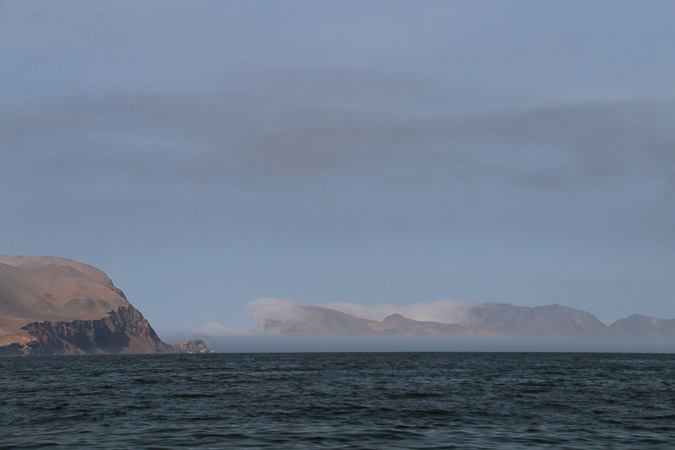
Our destination was the Islas Ballestas (near to S 13°44′ W 76°24′), which is a wildlife sanctuary teeming with bird life and sea lions.
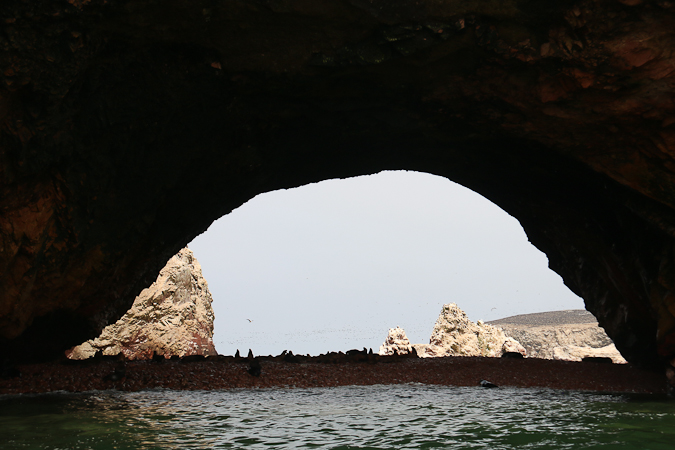



There are interesting sea caves running right through one of the islands.
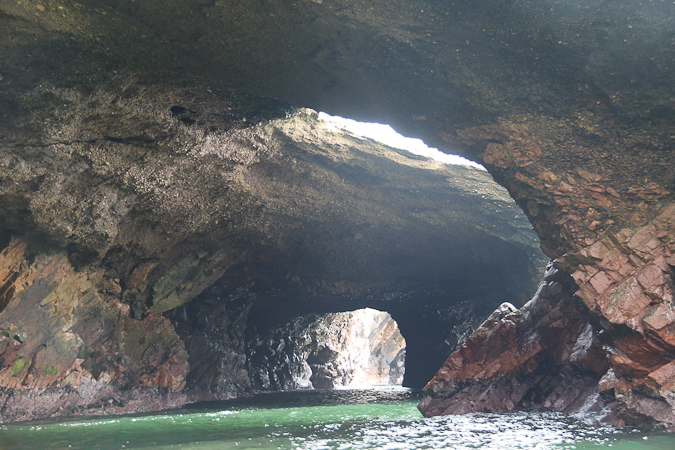
In addition to the sea lions, there were pelicans, Inca terns, boobies (including a few with chicks), and — kind of mirroring our Antarctic experience — penguins, this time the Humboldt penguin which is one of the more northerly tropical penguins (I confess to not having been especially aware of the existence of tropical penguins before this trip).
So, these are the Peruvian pelicans; I suspect they’re juveniles, judging from the colours in some of the later photos, unless there were two species of pelican in attendance (I have tried some googling in an attempt to find answers, and although I think I have some evidence that there is only one species though perhaps with quite a bit of colour variation, my Google-fu has failed me on a definitive answer 🙁 ).

And here, living in harmony with the pelicans, are the Humboldt penguins (actually, I can’t be truly certain that they live in harmony, and since living space is at a premium I can imagine some territorial argy-bargy of the non-harmonious kind). Judging from the slightly mangy/fluffy/grey-rather-than-bold-black appearance these may well be mostly juveniles too.


These are definitely Peruvian pelicans.
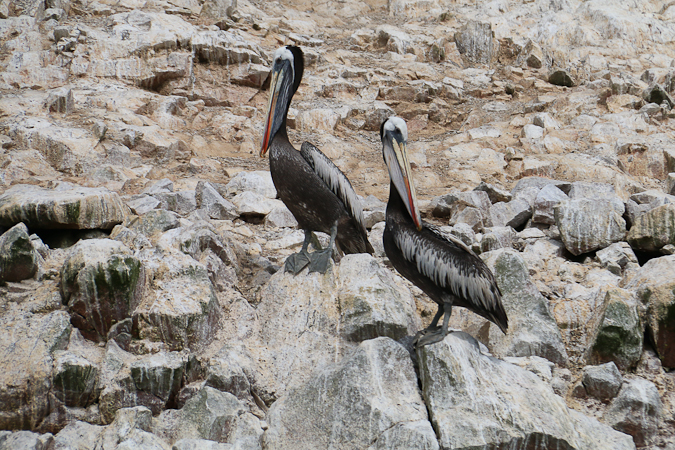
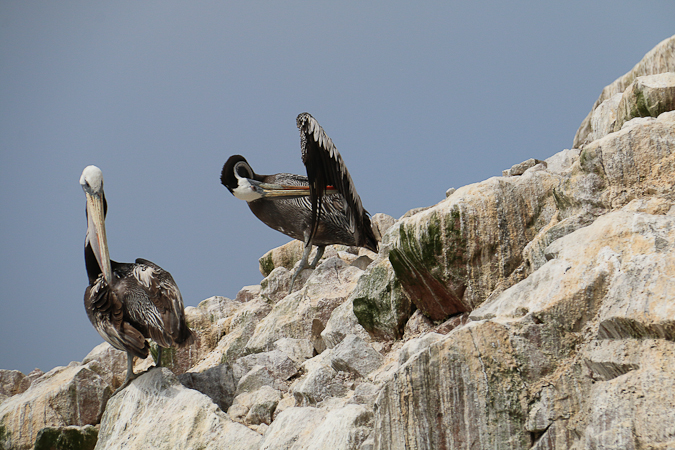
And these definitely aren’t. These are, in fact, Inca terns. Most are slightly terned to the right.
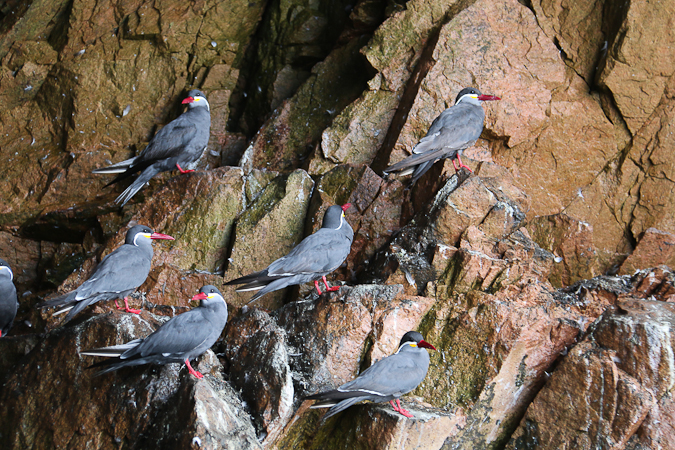
The pelicans are quite majestic in flight.


They’re also quite impressive just standing around …

… or doing a little tail wag and wing shake in the sun.
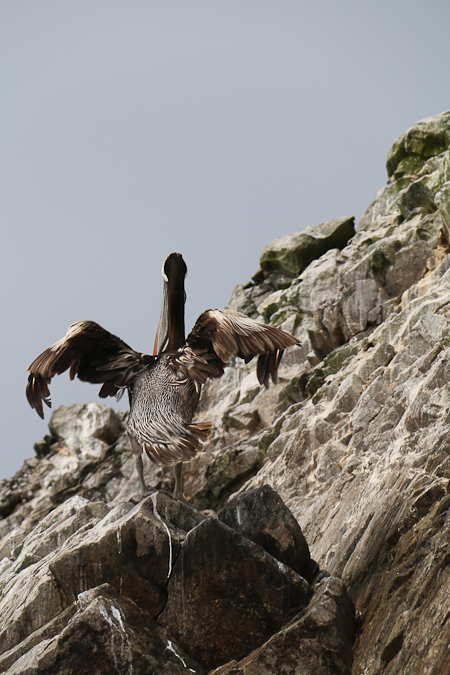
There was also an island that seemed full of guanay cormorants (the grey left-hand half of the plateau is high-density cormorants), with many of them flying off in a steady stream that looked like a thick line of ants flying across the horizon.
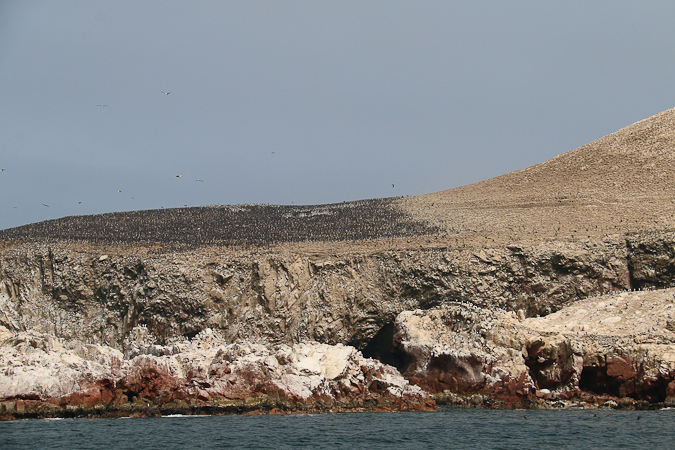

There was a strong smell of guano, largely attributable to the guanay cormorant. The guano industry has been important to the Peruvian economy, and there were even wars with Spain and Chile over it.


Almost lastly, but by no means leastly, these are the Peruvian boobies, and you can see chicks in the third photo.


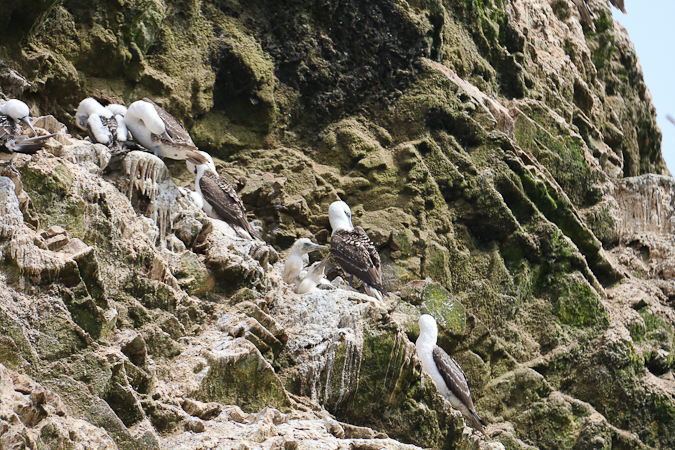
To say that the islands have an abundance of birdlife seems something of an understatement.
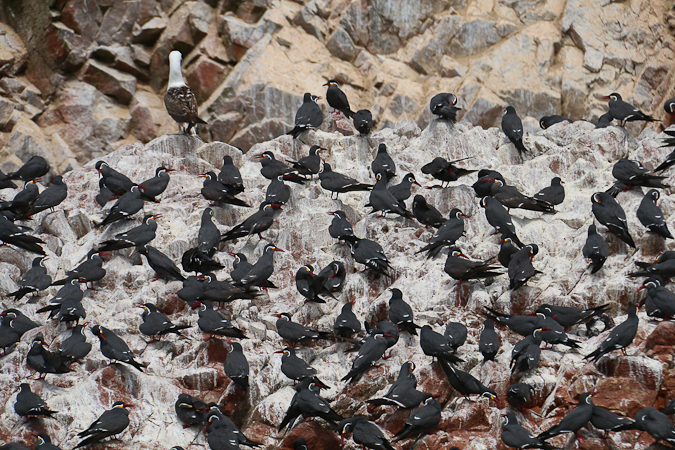
 Helen Chick
Helen Chick
Latest comments